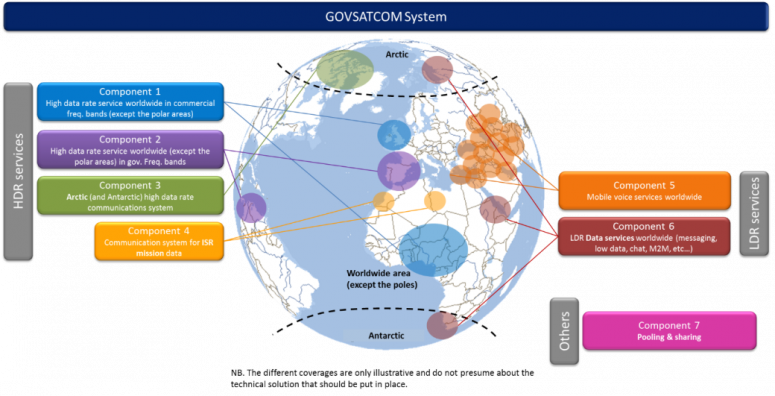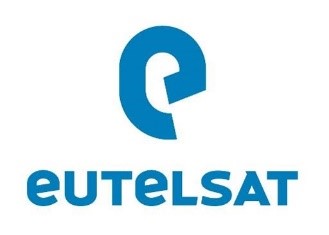
-
StatusCompleted
-
Status date2024-06-14
-
Activity Code1B.096
GOVSATCOM communications are at the boundaries between commercial SATCOM (COMSATCOM) and military SATCOM (MILSATCOM). Key challenges are linked to guarantee of access, security of the communications, and services availability.
GOVSATCOM services can be provided to European Public Safety entities thanks to different means: classic commercial services, adequate procurement schemes to ensure immediate and guarantee access on either commercial assets or governmental assets, or dedicated GOVSATCOM assets.
The aim of Securesat study is:
- first to assess the Users and Mission requirements for GOVSATCOM communications,
- secondly to identify existing (or soon to be deployed) assets and adequate procurement models that can answer to these requirements,
- then to identify the remaining gap and to define complementary new assets to fulfil the full set of requirements. The candidate solutions shall be evaluated through a trade-off to identify the best solutions (taking into account cost-effective parameters).
The horizon timeframe considered runs until 2040 and the system should be deployed in 2025.
The key issue were to define the complementary future assets necessary for GOVSATCOM in coherency with the activity performed in the frame of EDA/Euroconsult study, dealing at the same time with stringent System Requirements and cost effective targets to ensure the political commitment for the project.
This study aimed at a consolidation of user needs and mission requirements definition, then the identification of future mission implementation scenarios and design options in case of future assets, the preliminary design of the future assets and the identification of study follow-ons and technology developments / demonstrations necessary to support their development in the frame of the GOVSATCOM program.
GOVSATCOM is a system of systems, based on both existing assets and potentially future assets. Future assets studied in the frame of Securesat comprise satellite assets and/or ground assets.
The complete set of future assets constitutes Securesat and shall contribute and complete existing assets to cover all GOVSATCOM requirements.
The GOVSATCOM system has been decomposed in seven main Components. The Components have been proposed based on the capabilities and on the technical constraints that can be associated to different services, applications and coverages.

The proposed aggregated system is a composition “already” or “to be deployed” certified GOVSATCOM systems and made available via Component 7 (Pooling and sharing) plus new GOVSATCOM space assets deployed to fill gaps in terms of:
- Capacity
- Security
- Coverage
- Sovereignty
- Services
The aggregated system includes a Federate European Ground Segment component (P&S) which permits the GOVSATCOM users to access pooled and shared capacity by already deployed or planned GOVSATCOM certified assets (if they are available) and new GOVSATCOM assets (SECURESAT).
To fulfil the GOVSATCOM requirement expressed for the horizon 2040, the SECURESAT to be deployed in 2025 will be composed of:
- Federate Ground Segment (Pool and Sharing)
- Sparse LEO constellation for LDR and M2M services (service gap filler)
- Constellation of 2 HEO satellites for Arctic coverage and providing HDR and LDR services (coverage gap filler)
- 3 GEO hosted payloads or full satellites, positioned for global coverage and providing
- HDR services (GOVSATCOM certifiable capacity gap filler in commercial frequency bands)
- complementing European optical assets
Interfacing with EDRS system and GLOBENET is desirable for the GOVSATCOM system.
The first phase (2 months) allows to present to the SRR (System Requirement Review):
- consolidated users’ needs and Mission Requirements,
- analysis of existing system that can contribute to Govsatcom,
- specification of future complementary assets through the “System Requirements”,
The second phase (2 months) focus on the definition of candidate solution to answer to the System Requirements and to perform a trade-off among these solutions, to be validated during the ISR (Implementation Selection Review).
The last phase (5 months) focuses on the detailed definition of the selected solutions and propositions for the precursor. Results are presented at the PDR (Preliminary Definition Review) and FR (Final Review).
The main outputs of the SECURESAT study had been:
- A refinement consolidation of User Requirements;
- A definition of the Mission Requirements and of GOVSATCOM certification concept
- A structuration of the overall system in Components able to satisfy the identified mission requirements
- An Identification and characterization of Pooling and Sharing component
- An identification for each Component of the applicable existing assets and a critical review of them based on the GOVSATCOM certification criterion to identify the gaps:
- A definition for each Component of several E2E solutions
- A definition of a first set of System Requirements for the new assets needed to fill the gaps
- Technological, performance and economical trade-offs for the solutions of each component to identify a candidate aggregated system able to satisfy the mission requirements.
- A high level architecture description of the SECURESAT assets to justify the trade-off project and iterate with GOVSATCOM feasibility study
- A system architecture description of the SECURESAT assets to identify critical technologies and corresponding plans for development, validation and demonstration for risk management.
- An identification of technology development plans (technology roadmaps) and study follow-ons for the SECURESAT assets
The proposition about the space assets has to be considered as a proposition related to the knowledge available at the time of its generation. It might be challenged and revised based on the new or assessed inputs coming from the consolidation of the GOVSATCOM user needs and mission requirements.




